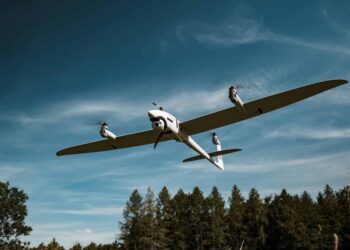, The changes to how the Ministry of Defence maintains and repairs Harrier and Tornado aircraft have reduced costs by a total of £1.4 billion over the last six years. Although availability of the aircraft temporarily declined during the transition period, availability targets for the Harrier are now being met and for the Tornado, where the programme is less mature, targets were met in December 2006.
Whereas previously all repairs had been carried out across multiple sites, the MoD has rationalised how it repairs and maintains its jets and created a two pronged approach of 'forward repair' – operational maintenance and minor repairs to the jets; and 'depth repairs' – where more significant work is needed.
Forward repairs are now conducted at each operational squadron, and depth repairs are conducted at a single location – RAF Marham for Tornado aircraft and RAF Cottesmore for Harrier aircraft. Upgrade work has been integrated within the depth repair process, in particular for the Harrier which is undergoing a major upgrade from the GR7 to GR9 standard.
To do this the MoD has applied new techniques, including introducing pulse lines – similar to a production line used in the motor car industry. These bring significant benefits, including greater productivity with fewer man-hours and less workspace and spares holdings.
The MoD has entered into new partnerships with industry which are managed by teams made up of contractors and military personnel situated at main RAF bases. The new arrangements are based on industry making available a specified number of aircraft or engines, rather than on the number of repairs they carry out or the number of spare parts they provide.
Changes have been introduced to the Harrier and Tornado fleets at different times, but the cost of support has decreased significantly. Over the period 2001-02 to 2006-07, the Department has achieved cumulative savings in the support budgets of the Integrated Project Teams managing Harrier and Tornado aircraft of £109 million and £1.3 billion respectively.
The operational availability of Harrier aircraft has been below target since 2001, and availability dropped even further with the start of the upgrade work in 2003. However, in the last half of 2006 aircraft availability has been at or close to 100 per cent against a revised target, mainly because there were fewer aircraft in depth repair, as a result of the changes the Department has introduced.
The pulse line approach means the time taken to perform minor maintenance on the Harrier jet has reduced by 19 per cent. The MoD has also been able to meet a surge in repair needs following operations in Afghanistan.
Since September 2006 availability of the Tornado aircraft has been improving and their availability target was met at the end of December 2006. The new repair systems have also reduced minor repair times by 37 per cent.
There is potential for the MoD to get more from the transformation, however, two significant risks also remain.
The MoD has found it difficult to provide sufficient trained personnel to man the pulse lines for both the Harrier and the Tornado jets, but is committed to finding a way of doing so.
There are also problems with the timely supply of spare parts for both types of aircraft. The supply chain is critical to the operation of a pulse line and the MoD is working with industry to try and resolve these difficulties.
Sir John Bourn, head of the National Audit Office, said today:
“The Ministry of Defence has made significant reductions in the cost of repairing and maintaining its jets, whilst broadly maintaining aircraft availability. On this basis, the changes represent value for money and underline the benefit of the MoD's approach to partnering with industry and rationalising repair activity.
“However, risks remain and it is important for the MOD to continue to manage these so as not to compromise the good work it has done in this area.”
The Comptroller and Auditor General, Sir John Bourn, is the head of the National Audit Office which employs some 850 staff. He and the NAO are totally independent of Government. He certifies the accounts of all Government departments and a wide range of other public sector bodies; and he has statutory authority to report to Parliament on the economy, efficiency and effectiveness with which departments and other bodies have used their resources.
Germany says adding explosive drones to weapons arsenal
Germany said Friday it would buy explosive drones for the first time as Berlin boosts investments in its armed forces...









